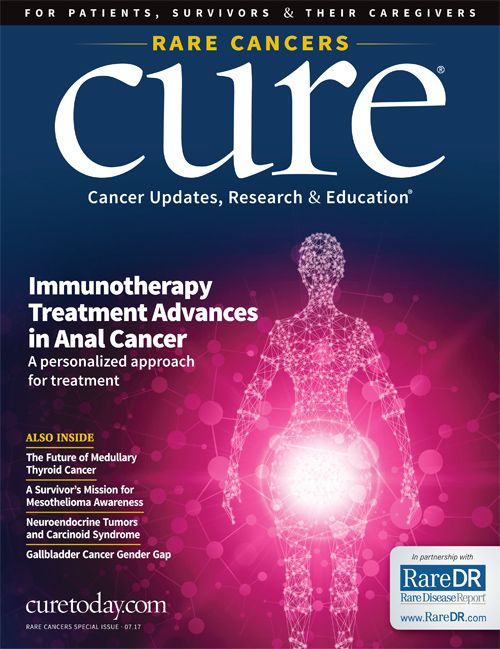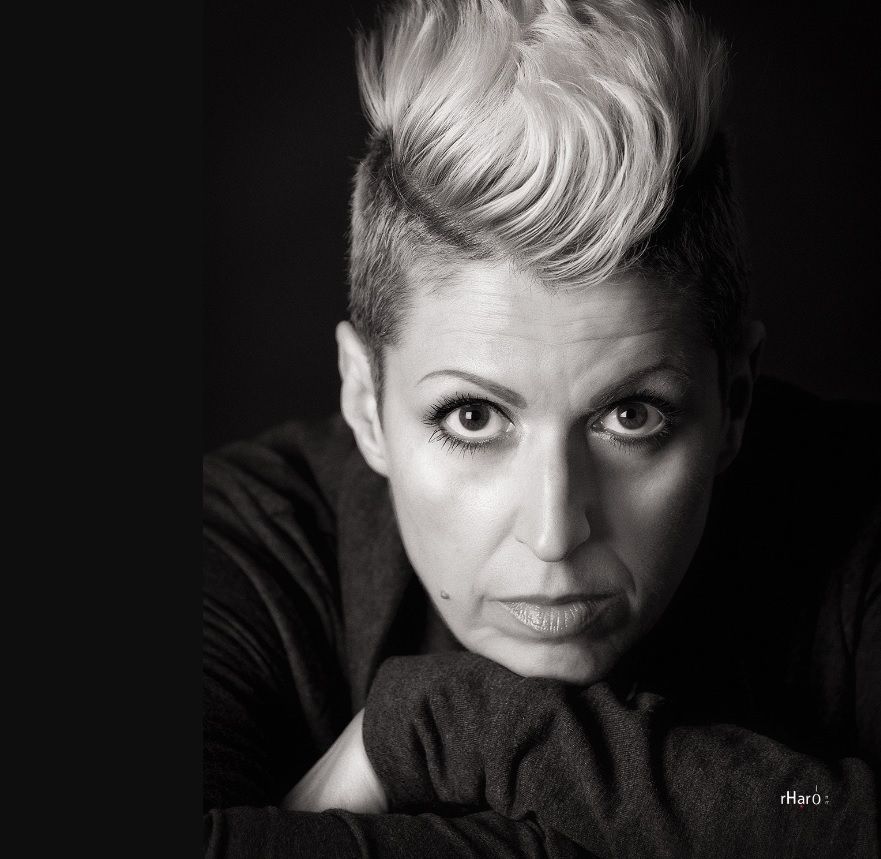Publication
Article
CURE
On a Mission: Mesothelioma Survivor Fights for Awareness, Understanding and Hope
Author(s):
After a shocking diagnosis, Heather Von St. James is on a mission to spread awareness about mesothelioma.
After giving birth to her daughter Lily 11 years ago, Heather Von St. James felt fatigue like no other and lost a lot of weight. She chalked it up to what most new mothers experience after childbirth, breastfeeding and life with a newborn, until one day when she barely made it up a flight of stairs with her laundry basket. She passed out on the couch while her baby daughter slept quietly in her sling, and when the young mother woke up — realizing that an entire hour had passed — she panicked, finally understanding that the symptoms she was experiencing were anything but normal.
Von St. James’ had been running low-grade fevers, and her hemoglobin count was low, so her doctor thought a lack of blood oxygen might explain her breathlessness. He prescribed iron supplementation, but when that didn’t improve her symptoms, he suspected something more serious and ordered a chest X-ray which revealed fluid around Von St. James’ lung. A follow-up procedure done to remove excess fluid in her lungs yielded an odd-colored fluid. A CT scan then showed a four-inch mass on the lower left part of her lung which, when biopsied, led to a diagnosis of malignant pleural mesothelioma.
“I was in shock,” admits Von St. James. “All I could think [naively] was: ‘How do I get rid of it?’” She soon realized — and her husband Cameron already understood — that battling mesothelioma was not going to be easy, and she embarked on a complicated and fraught journey for herself and her young family involving aggressive and experimental treatments that included an initial prognosis of just 15 months to live and the removal of her left lung.
A Deadly Hug
Mesothelioma is a rare and deadly cancer caused by exposure to asbestos. When Von St. James first heard she had the disease, her initial reaction of “Why me?” quickly turned into the realization that she had been exposed to the deadly substance by wearing her father’s work clothes as a child, before people understood the risk.
Her father worked in construction that involved a lot of demolition work. “I would hug him when he came home from work and often wear my Dad’s dusty jacket when I went outside to rake leaves or feed my rabbit … it was my thing,” says Von St. James. “‘I was Daddy’s little girl.’ They now call this ‘deadly hugs.’ That’s how I was exposed to asbestos.”
Despite the grim prognosis, Von St. James and her husband were not willing to settle for the standard regimen at the time of chemotherapy and radiation which, at best, could extend survival up to five years. Her doctor told her there was a new surgical approach involving removal of the affected lung that wasn’t for everyone, but trials were taking place in her home state at the University of Minnesota, the Mayo Clinic and in Boston — the latter directed by the specialist pioneering the procedure, David Sugarbaker, M.D., who was then chief of the Division of Thoracic Surgery at Brigham and Women’s Hospital.
Von St. James and her husband didn’t hesitate: “Get us to Boston.” Although she was worried about insurance coverage for out-of-network care, she says her doctor went to bat for them with the carrier, and 12 days later, she saw Sugarbaker. This set in motion a whirlwind process of testing to confirm she was right for the procedure.
“It was,” she recalls, “a really hard, hard surgery. Not everybody can get through it, but Dr. Sugarbaker felt I was a perfect candidate.” Her surgery was followed by a grueling four cycles of chemotherapy and six weeks of intensity-modulated radiation therapy.
Von St. James acknowledges that although there is no cure for mesothelioma, “I feel great and incredibly lucky and blessed to have made it 11 years.” The surgery she had is “potentially curative,” and her doctor does feel she is in remission. “Most people, even with treatment, die within five years. The fact that I’ve made it 11 is a little miraculous, a lot of luck, and it’s thanks to the incredible involvement of medicine and science.”
She continues to see Sugarbaker every six months, but now at the Lung Institute at Baylor College of Medicine in Houston, Texas, which he directs. “I followed him down there. He is just an amazing man, very talented and passionate about this disease.”
Dispelling Mesothelioma’s Myths
Among the many aspects of her diagnosis and recovery that Von St. James is very passionate about is educating people about this devastating disease, which for many, is defined by the commercials they see on TV plugging potential lawsuits for those who have been exposed to asbestos. People will say to her, “Oh, you’re rich, because you have mesothelioma.” And that, of course, “is not the case at all,” nor, frankly, is it anyone’s business.
Another myth she confronts is that mesothelioma only affects people who actually worked with asbestos decades ago — the misconception that the risk is gone, now that people are aware of it. Moreover, people are surprised to learn that although restrictions have been enacted to limit exposure to asbestos, it is not completely banned. She also wants people to know that many newly diagnosed patients have had secondhand exposure to asbestos through the homes where they grew up or schools they attended as children.
These are battles she says she “fights every day. That’s why I work so hard for awareness.”
Von St. James is hopeful that immunotherapy may bring fresh hope to patients with mesothelioma, and early findings from the KEYNOTE-028 study suggest that the PD-L1 checkpoint inhibitor Keytruda (pembrolizumab) may be effective in treating the disease. “Without clinical trials, we wouldn’t be where we are,” Von St. James stresses. “That’s why I tell people, if you’re not a candidate for surgery, don’t give up. There are always options. Exhaust those options before you give up.”
“Lung Leavin’ Day”
To honor her remarkable good fortune as a mesothelioma survivor, every year on the anniversary of her surgery February 2nd, Von St. James and her husband host a huge party at their home, based on a tradition that dates back to her Swedish ancestors. Along with games, cupcakes and Sloppy Joes, guests take a plate and write their fears on it with a marker. They then smash those plates into a big bonfire. “It’s very cathartic and symbolic,” she explains. “People are empowered. There’s something about giving voice to your fears and then just getting rid of them.”
For Von St. James, “paying it forward,” also means advocating for improved mesothelioma awareness, funding for research and helping others to get access to the best treatments, including clinical trials like the one that saved her life. She is active with the Mesothelioma Cancer Alliance, which provides information and resources for patients and their families, and urges patients and caregivers to also contact the Mesothelioma Applied Research Foundation, for more information about clinical trials in mesothelioma.
“Today,” says Von St. James, “I’ve outlived my original prognosis and continue to raise awareness of this terrible disease … “When hope is in the equation, the odds don’t matter.”






